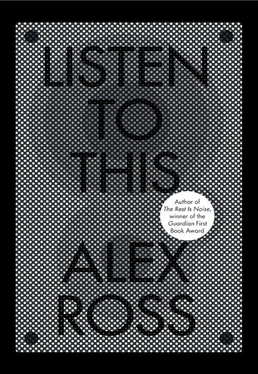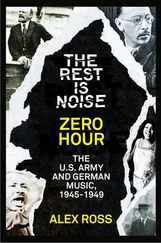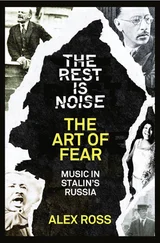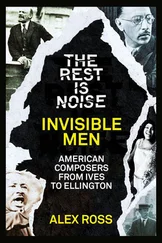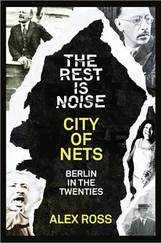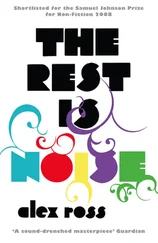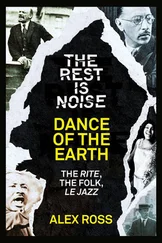Perhaps there is something unnatural in the very act of making a studio recording, no matter how intelligent the presentation. At the height of the hi-fiera, leading classical producers and executives—Walter Legge, at EMI; Goddard Lieberson, at Columbia Records; and John Culshaw, at Decca, to name three of the best—spent many millions of dollars engaging top-of-the-line orchestras, soloists, and conductors in an effort to create definitive recordings of the peaks of the repertory. They met their goal: any short list of gramophone classics would include Maria Callas’s Tosca , Wilhelm Furtwängler’s Tristan und Isolde, Georg Solti’s Ring, and Glenn Gould’s Goldberg Variations, all recorded or set in motion in the fifties. Yet the excellence of these discs posed a problem for the working musicians who had to play in their wake. Concert presenters began to complain that record collectors had formed a separate audience, one that seldom ventured into the concert hall. Recordings threatened to become a phantasmagoria, a virtual reality encroaching on concert life. (Gould claimed that the Decca Ring achieved “a more effective unity between intensity of action and displacement of sound than could be afforded by the best of all seasons at Bayreuth.”) When people did venture out, they brought with them the habits of home listening. The solitary ritual of absorbing symphonies in one’s living room almost certainly contributed to the growing quietude of the classical public; that applause-free spell after the first movement of the Eroica matches the whispery groove on the long-playing record.
Like Heisenberg’s mythical observer, the phonograph was never a mere recorder of events: it changed not only how people listened but also how they sang and played. Mark Katz, in his book Capturing Sound, calls these changes “phonograph effects.” (The phrase comes from the digital studio, where it is used to describe the crackling, scratching noises that are sometimes added to pop-music tracks to lend them an appealingly antique air.) Katz devotes one chapter of his book to a shift in violin technique that occurred in the early twentieth century. It involved vibrato—the trembling action of the hand on the fingerboard, whereby the player is able to give notes a warbling sweetness. Early recordings and written evidence suggest that in prior eras vibrato was used more sparingly than it is today. By the twenties and thirties, many leading violinists had adopted continuous vibrato, which became the approved style in conservatories. Katz proposes that technology prompted the change. When a wobble was added to violin tone, the phonograph was able to pick it up more easily; it’s a “wider” sound in acoustical terms, a blob of several superimposed frequencies. Also, the fuzzy focus of vibrato enabled players to cover up inaccuracies of intonation, and, from the start, the phonograph made players more self-conscious about intonation than they were before. What worked in the studio then spread to the concert stage.
Robert Philip, a British scholar who specializes in performance practice, tackles the same problem in his book Performing Music in the Age of Recording. He proposes that when musicians listened to records of their own playing they passed through a kind of mirror stage; for the first time, they were forced to confront their “true” selves. “Musicians who first heard their own recordings in the early years of the twentieth century were often taken aback by what they heard, suddenly being made aware of inaccuracies and mannerisms they had not suspected,” Philip writes. When they went back onstage, he says, they tried to embody the superior self that they glimpsed in the phonographic mirror, and never again played in quite the same way.
Philip gives a riveting description of what classical performances sounded like at the turn of the last century. “Freedom from disaster was the standard for a good concert,” he writes. Rehearsals were brief, mishaps routine. Precision was not a universal value. Pianists rolled chords instead of playing them at one stroke. String players slid expressively from one note to the next—portamento, the style was called—in imitation of the slide of the voice. In a 1912 recording, the great Belgian violinist Eugène Ysaÿe “sways either side of the beat, while the piano maintains an even rhythm.” Orchestras flirted with chaos in an effort to generate maximum passion—witness Edward Elgar’s recordings of his music. And the instruments themselves sounded different, depending on the nationality of the player. French bassoons had a pungent tone, quite unlike the rounded timbre of German bassoons. French flutists, by contrast, used more vibrato than their German and English counterparts, supplying a warmer, mellower quality. American orchestral culture, which brought together immigrant musicians from all European countries, began to erode the differences, and recordings helped to cement the new standard practice. Whatever style sounded cleanest on the medium—in these cases, German bassoons and French flutes—became the golden mean. Young virtuosos today may have recognizable idiosyncrasies, but their playing seldom indicates that they have come from any particular place or that they have emerged from any particular tradition.
Opera is prey to the same standardizing trend. The conductor and scholar Will Crutchfield cites a startling example of a “phonograph effect” in an essay on changing perceptions of operatic style. He once sat down to compare all extant recordings of “Una furtiva lagrima,” the plaintive tenor aria from Donizetti’s bel-canto comedy L’elisir d’amore . Crutchfield wanted to know what singers of various eras have done with the cadenza—the passage at the end of the aria where the orchestra halts and the tenor engages in a few graceful acrobatics. Early recordings show singers trying out a range of possibilities, some contemplative, some florid, none the same. Then came Caruso. He first recorded “Una furtiva lagrima” in 1902, and returned to it three more times in the course of his epochal studio career. After that, tenors began imitating the stylish little display that Caruso devised: a quick up-and-down run followed by two slow, tender phrases. Out of more than two hundred singers who have recorded the aria since Caruso’s death, how many try something different? Crutchfield counts four. Many operagoers would identify Caruso’s cadenza as the “traditional” one, but Crutchfield calls it the “death-of-tradition” cadenza, the one that stifled a long-flourishing vocal practice.
The tics and traits of old-school performance—moving ahead or behind the beat, sliding between notes, breaking chords into arpeggios, improvising cadenzas, adding ornaments as the style demands—are alike in bringing out the distinct voices of the performers, not to mention the mere fact that they are fallible humans. Most modern playing tends to erase all evidence of the work that has gone on behind the scenes: virtuosity is defined as effortlessness. One often-quoted ideal is to “disappear behind the music.” But when precision is divorced from emotion it can become anti-musical, inhuman, repulsive. Is there any escape from the cycle? Robert Philip, having blamed recordings for a multitude of sins, ends by saying that they may be able to come to the rescue. By studying artifacts from the dawn of the century, musicians might recapture what has gone missing from the perfectionist style. They can rebel against the letter of the score in pursuit of its spirit. There are, however, substantial psychic barriers in the way of such a shift: performers will have to be unafraid of trying out mannerisms that will sound sloppy to some ears, of committing what will sound like mistakes. They will have to defy the hyper-competitive conservatory culture in which they came of age, and also the hyper-professionalized culture of the ensembles in which they find work.
Читать дальше
